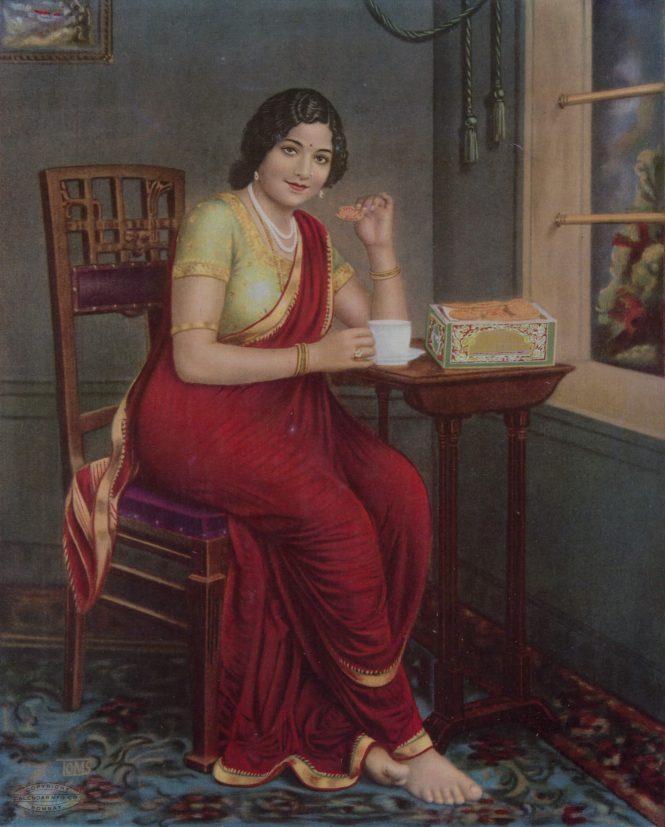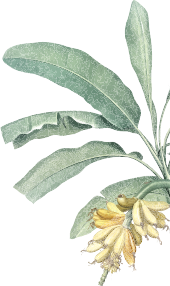
Chai: A social beverage?
While documenting a collection of ads in “Chai Why?” archivist Philip Lutgendorf noticed that most popular culture posters contained an upper class Indian woman sipping tea. Tea was considered to be a “social beverage” to be enjoyed with sugar and milk. However, cultivation and consumption of tea was deeply tied to colonial history. The East India Company set up tea cultivation plants in North Eastern India, and we see that today in names like Assam tea and Darjeeling tea. Both the British and Indians were reluctant to drink tea when it was introduced, let alone make it part of their daily lives. We see the impact of posters and magazine ads that were initiated by the British to influence people of the Indian subcontinent to consume it (which means tea entered India only in the colonial period, so tea as an ingredient doesn’t share the same history as other ingredients in this exhibition). In this poster by the Calendar Manufacturing Company, we observe that the woman is looking directly at us, confidently holding a cup of tea and a biscuit. The pearl jewellery, the tin biscuits, a cup and saucer with her feet placed on a carpet with English floral design indicate a specific class and domesticity. In the masala tea recipe below, we observe that even a pinch of spices makes this social beverage a very personal one.





Share It Now...